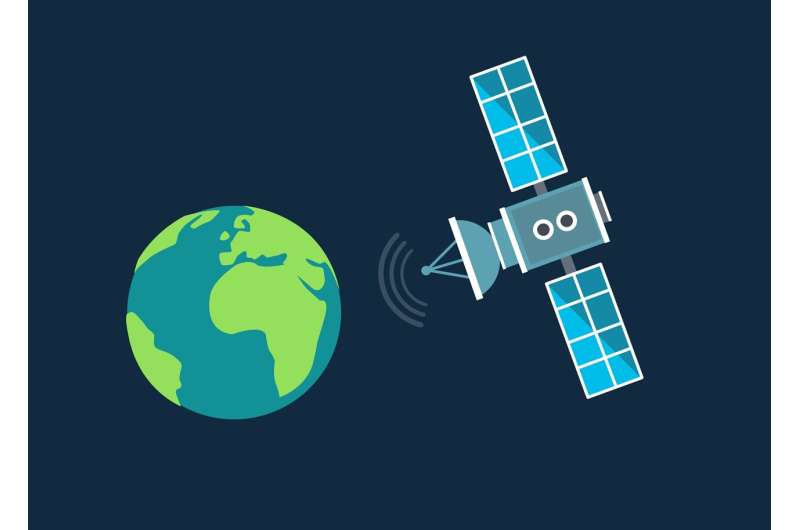

First test signal of the third-generation EGNOS system successfully broadcast
source link: https://techxplore.com/news/2022-02-third-generation-egnos-successfully.html
Go to the source link to view the article. You can view the picture content, updated content and better typesetting reading experience. If the link is broken, please click the button below to view the snapshot at that time.

February 24, 2022
First test signal of the third-generation EGNOS system successfully broadcast
by Autonomous University of Barcelona
 Credit: Pixabay/CC0 Public Domain
Credit: Pixabay/CC0 Public Domain
A team from IEEC and the Universitat Autònoma de Barcelona (UAB) has developed the algorithm to steer the signals sent from ground to the EGNOS satellites and broadcast back to EGNOS users.
The companies Airbus and Indra, together with the Universitat Autònoma de Barcelona (UAB), the European Union Agency for the Space Program (EUSPA), the European Space Agency (ESA) and Eutelsat, have successfully completed the first test signal broadcast of the third-generation (V3) EGNOS system (acronym which stands for "European Geostationary Navigation Overlay Service').
EGNOS provides corrections and integrity information for Global Positioning System (the well-known GPS) signals received by users and it is the system used, for instance, by aircrafts for GPS-assisted automatic landings. The new EGNOS V3 will augment and improve both GPS and GALILEO performances in some of the signal frequencies for civilian use (more specifically, in the L1/L5 and E1/E5 bands), thus providing satellite-positioning services to the most safety-critical applications, with aircraft navigation in the spotlight.
ESA awarded the development of EGNOS V3 to a consortium led by Airbus together with Indra, with the participation of researchers from the Institute of Space Studies of Catalonia (IEEC—Institut d'Estudis Espacials de Catalunya) at the Center of Space Studies and Research (CERES, IEEC—UAB). The team is formed by Dr. Sergi Locubiche-Serra and Professors Gonzalo Seco-Granados and José A. López-Salcedo, researchers of the UAB's Department of Telecommunications and Systems Engineering and IEEC members.
The researchers have developed the algorithm implemented in the "Navigation Land Earth Station' (NLES) that steers the signals sent from the ground to the EGNOS satellites and from these to the users. This algorithm, an essential part of the EGNOS system, allows seeing the received signal as if it had been generated on the satellite and not on ground as it actually is, and becomes one of the indispensable parts for the operation of the EGNOS system and, in this case, the forthcoming EGNOS V3 system.
Experimental tests of this algorithm were carried out in November 2021 during the first EGNOS V3 on-site proof-of-concept event where the algorithm was implemented on a real NLES station and transmission with a real satellite was performed. The tests were completed successfully and the algorithm worked flawlessly on the first attempt.
Therefore, this first integration concluded to validate that the algorithm created by the IEEC team successfully ensures that each signal is correctly steered at the satellite output by adapting in real time the uplink transmitted signal from ground NLES stations.
EGNOS V3
The third generation of EGNOS will operate on a multi-frequency and multi-constellation basis (GPS, GALILEO), embedding security protection against cyber-attacks.
The EGNOS-V3 test-signal campaign involved the new version of the EGNOS V3's NLES, developed by Indra as well as the Eutelsat E5WB's dual-frequency SBAS payload developed by Airbus.
EGNOS and its evolutions are managed by the EU Agency for the Space Program under the governance of the European Commission Directorate-General for Defense, Industry and Space (DG-DEFIS). The systems are designed and developed by ESA.
Explore further
Recommend
-
 36
36
readme.md
-
 6
6
Broadcast a signal on a channel yourbasic.org/golang All readers receive zero values on a closed channel. In this exampl...
-
 10
10
The Air Force's Artificial Intelligence System Successfully Flew For The First Time 4526 members Technology Technology on D...
-
 12
12
‘Next-Generation’...
-
 7
7
Which Python projects have completed their transition to a type system successfully? I am looking for large Python projects that have completed transition to the type system successfully. So far, I know about
-
 5
5
Blue Origin successfully completes third crewed mission to space, its first at full capacity NFL Super Bowl champ Michael Strahan was along for the ride By...
-
 5
5
Apple's first live sports broadcast will promote Siri and Apple MusicKey PointsIn this articleWashington Nationals second baseman Josh Harrison (5) gets the force...
-
 8
8
Watch the first episode of The Mandalorian on broadcast TV later this month Think of it as a free trial without having to jump through any hoops By
-
 5
5
AirTunes signal injection and broadcast
-
 5
5
MediaBroadcast and cable make up less than half of TV usage for the first time ever
About Joyk
Aggregate valuable and interesting links.
Joyk means Joy of geeK